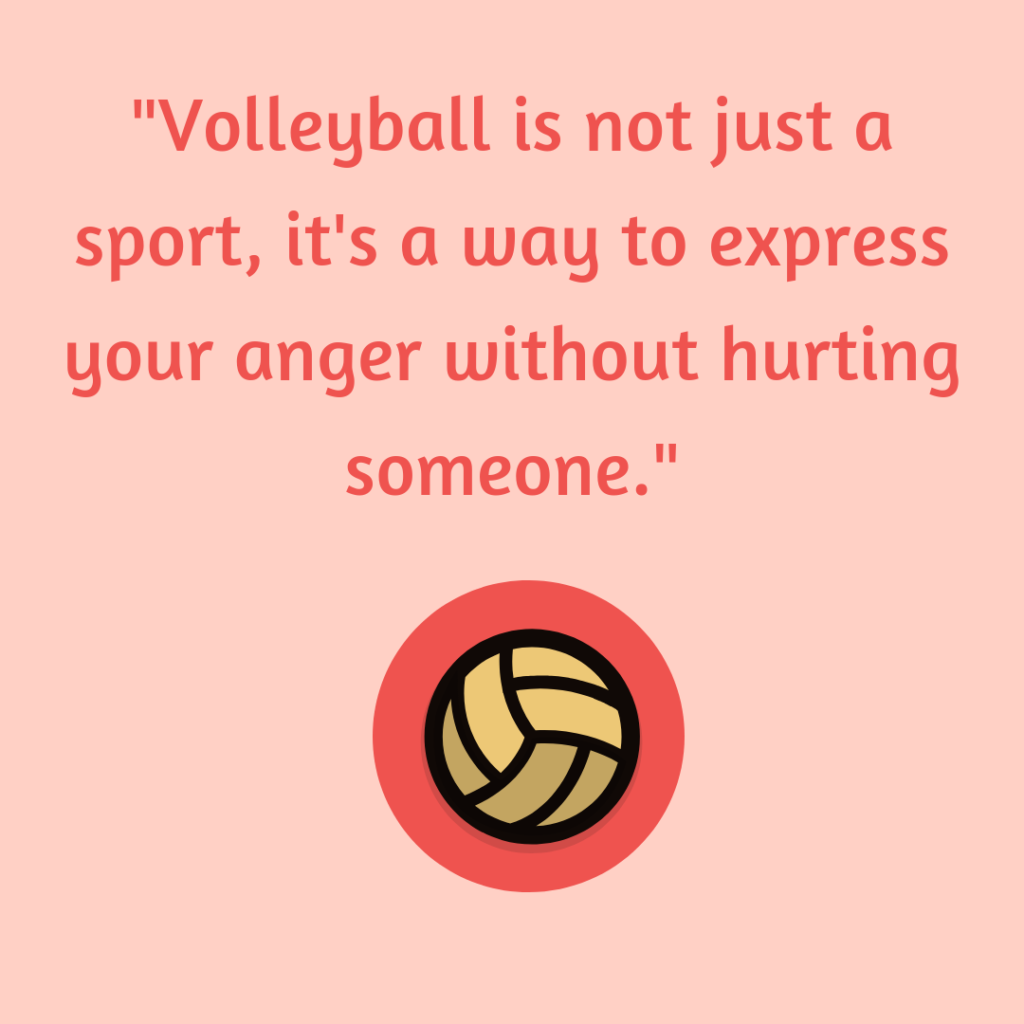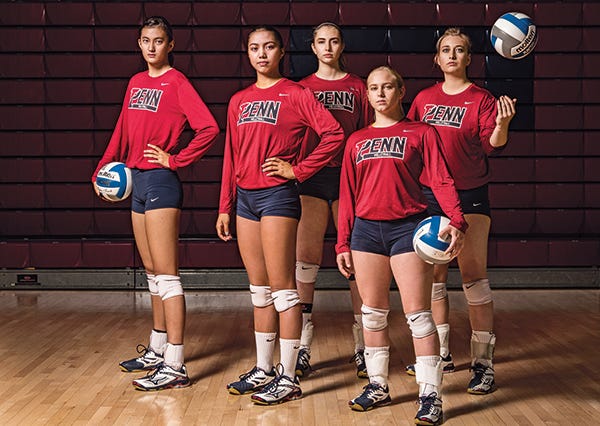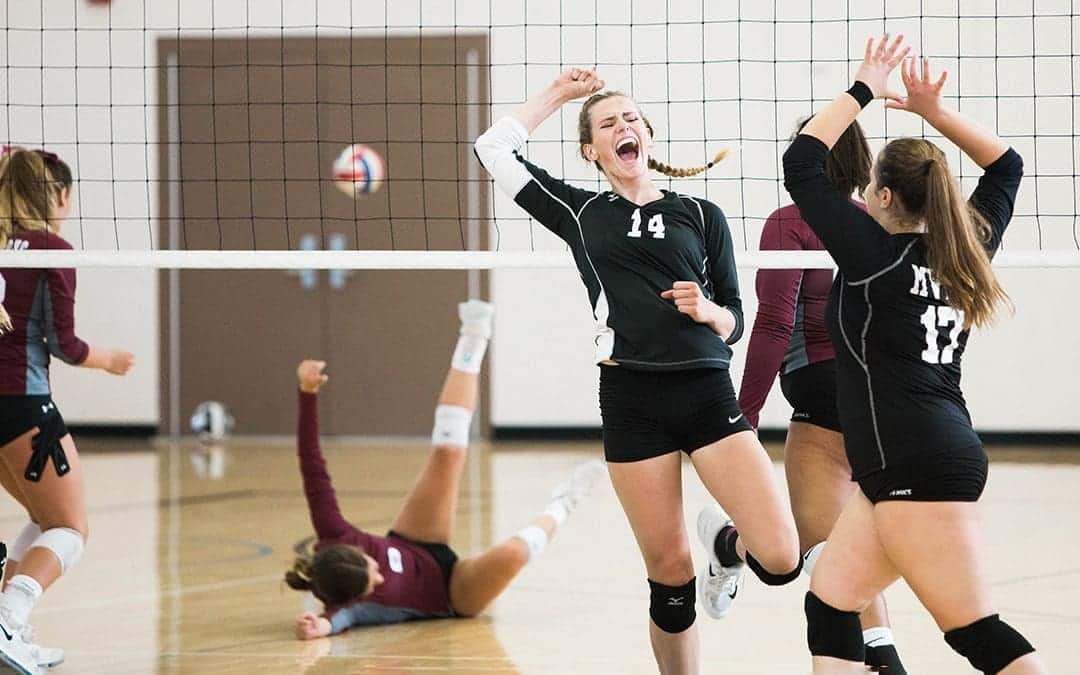Yes, volleyball can be a hard sport. It requires skill, agility, and teamwork.
Many people wonder if volleyball is difficult because it looks easy on TV. The truth is, mastering this sport takes time and dedication. Volleyball challenges players with its fast pace and strategic plays. Each position demands different skills, from powerful spikes to precise serves.
Learning to work as a team adds another layer of complexity. Players must communicate well and move in sync. The physical demands are high too. Jumping, diving, and quick movements test your endurance. But don’t be discouraged. With practice, anyone can improve. Whether you’re a beginner or experienced, volleyball offers fun and excitement for all skill levels.
Physical Demands
Volleyball is often seen as a fun and exciting sport. But behind the fun, there are significant physical demands. Players need to be in excellent shape. They must have good endurance and strength to play effectively.
Endurance
Endurance is essential in volleyball. Matches can be long, requiring players to stay active for extended periods. Players need to run, jump, and dive continuously. This constant movement can be exhausting.
To maintain energy, players often follow strict training routines. These routines include cardiovascular exercises like running and cycling. Endurance training helps players stay sharp and responsive throughout the game.
Strength
Strength is another crucial aspect of volleyball. Players must have strong muscles to perform powerful spikes and serves. This strength often comes from weight training and bodyweight exercises.
Here are some common strength exercises for volleyball players:
- Squats
- Deadlifts
- Push-ups
- Planks
These exercises help build the muscles needed for explosive movements. They also reduce the risk of injuries, keeping players in peak condition.
Strength training is not just for the arms and legs. Core strength is vital too. A strong core helps players maintain balance and stability. It also aids in quick direction changes during the game.

Credit: blog.seas.upenn.edu
Technical Skills
Volleyball requires a range of technical skills that players must master. These skills are crucial for effective gameplay. Two key technical skills in volleyball are serving and setting. Each requires practice, precision, and agility.
Serving
Serving is the first action in a rally. It can set the tone for the entire game. A good serve can put the opposing team on the defensive. There are different types of serves, each requiring unique techniques:
- Underhand Serve: Easier for beginners, involves a gentle swing of the arm.
- Overhand Serve: More advanced, requires a powerful and accurate swing.
- Jump Serve: Most difficult, combines a high jump with a powerful hit.
Mastering serves involves focus and consistency. Players must practice their aim and power. A well-placed serve can score points directly. It can also disrupt the opposing team’s formation.
Setting
Setting is crucial for creating scoring opportunities. A setter directs the ball to attackers. The goal is to make the ball easy for attackers to hit. Key points to consider when setting:
- Hand Position: Hands should form a triangle shape.
- Footwork: Quick movements ensure accurate ball placement.
- Timing: The ball must be set at the right moment.
Good setters read the game well. They anticipate the ball’s trajectory. They also communicate effectively with teammates. This coordination is vital for successful attacks.
Both serving and setting are essential technical skills. They require dedication and practice. Mastery of these skills can significantly improve a player’s performance on the court.
Mental Toughness
Volleyball demands more than just physical ability; it requires mental toughness. This essential trait helps players stay focused, bounce back from setbacks, and remain determined under pressure. Let’s explore how focus and resilience contribute to mental toughness in volleyball.
Focus
Focus is crucial in volleyball. Players must always stay alert and aware. The game moves quickly, so sharp focus is essential.
- Watching the ball
- Reading the opponent’s moves
- Reacting promptly
Players need to concentrate during serves, spikes, and blocks. Losing focus can cost points and even matches. Staying mentally sharp ensures better performance.
Resilience
Volleyball players must have resilience. This trait helps them recover from mistakes and setbacks.
- Missed serves
- Failed blocks
- Lost points
Resilience means learning from errors and moving forward. A resilient player doesn’t dwell on failures. Instead, they stay positive and improve. This attitude is vital for success in volleyball.
Team Dynamics
Volleyball is often considered a challenging sport because of the need for strong team dynamics. Each player must work in harmony with others to succeed. Team dynamics in volleyball involve effective communication and coordination.
Communication
Strong communication is key in volleyball. Players must call out plays and alert each other about the ball’s position. This ensures everyone is on the same page.
Good communication also helps in anticipating the opponent’s moves. For example, players use specific terms to signal strategies. This quick exchange of information can make or break a game.
Here’s a simple table showcasing common volleyball terms:
| Term | Meaning |
|---|---|
| Set | Passing the ball high for a teammate to spike |
| Spike | Hitting the ball hard over the net |
| Block | Defending against a spike at the net |
Coordination
Coordination is another critical aspect of volleyball. Players must move in unison to cover the court efficiently. Each player has a role, and their movements must complement each other.
For instance, while one player serves, others prepare to receive the ball. The smooth transition from defense to offense relies on precise coordination. This ensures the team adapts quickly to the game’s pace.
Here are key points for improving coordination:
- Practice specific drills
- Understand each role
- Work on timing
Effective coordination helps the team stay synchronized. This minimizes errors and maximizes performance on the court.
Training Regimen
Volleyball might seem like an easy sport, but it requires a rigorous training regimen to excel. The commitment to practice and physical conditioning is essential. Below, we explore the critical elements of this regimen.
Practice Drills
Practice drills are the backbone of volleyball training. These drills help players develop essential skills such as serving, passing, setting, and spiking. Each drill focuses on a specific aspect of the game.
- Serving Drills: Players practice different types of serves to improve accuracy and power.
- Passing Drills: These drills enhance a player’s ability to control and direct the ball.
- Setting Drills: Players work on their precision and timing to set up successful attacks.
- Spiking Drills: These exercises focus on improving a player’s hitting power and placement.
Regular practice of these drills is crucial. It helps players build muscle memory and improve their overall performance on the court.
Conditioning
Conditioning is another vital part of volleyball training. It enhances a player’s physical fitness, which is necessary for enduring long matches. The conditioning regimen includes:
| Type | Description |
|---|---|
| Cardio | Running, cycling, and swimming to boost endurance. |
| Strength Training | Weightlifting and body-weight exercises to build muscle. |
| Flexibility | Stretching and yoga to prevent injuries. |
Each player follows a personalized conditioning program. This program helps them meet the physical demands of volleyball. Combining these elements ensures players remain fit and perform at their peak.
Game Strategies
Understanding game strategies can make volleyball much easier. These strategies involve both offensive and defensive tactics. Mastering them can give you an edge over your opponents. Let’s dive into the specifics of these strategies.
Offensive Tactics
Offensive tactics focus on scoring points. One common tactic is the spike. Players jump and hit the ball hard to the other side. This makes it hard for the other team to return. Another tactic is the tip. Instead of hitting the ball hard, players gently tap it. This catches the other team off guard.
Setting is also vital in offense. The setter decides who will hit the ball. A good setter reads the game well. They make quick decisions. They set the ball in a way that makes it easy to score. Quick sets can confuse the blockers. This gives the hitter a clear shot.
Defensive Tactics
Defense is all about preventing the other team from scoring. One key tactic is blocking. Players jump with their hands up. They try to stop the ball from crossing the net. Timing is crucial for a good block. Players need to read the hitter’s body language.
Digging is another important defensive skill. It involves diving to save the ball. This keeps the rally going. Players need to be quick and alert. They must anticipate where the ball will land. Good communication helps the team coordinate their defense.
Positioning is also critical. Players must cover the court effectively. They should always be ready to move. A well-positioned team can defend against any attack. This makes it harder for the other team to score.
Injury Risks
Volleyball is an exciting sport, but it comes with its injury risks. Understanding these risks can help players stay safe and enjoy the game.
Common Injuries
Volleyball players often face injuries due to the fast-paced nature of the sport. Here are some common injuries:
- Sprains and Strains: These occur in the ankles and wrists.
- Shoulder Injuries: Repeated overhead movements can cause shoulder pain.
- Knee Injuries: Jumping and landing can stress the knees, leading to conditions like patellar tendinitis.
- Finger Injuries: Blocking and setting the ball can lead to jammed fingers.
Prevention Tips
Preventing injuries is crucial for enjoying volleyball. Follow these tips to stay safe:
- Warm Up Properly: Always start with a good warm-up to prepare your muscles.
- Use the Right Gear: Wear proper shoes and knee pads for support and protection.
- Strengthen Muscles: Regularly perform exercises to strengthen your shoulders, knees, and core.
- Practice Good Techniques: Learn and use the correct techniques for serving, spiking, and blocking.
- Rest and Recover: Give your body time to rest and recover between games and practices.
By understanding the risks and taking steps to prevent injuries, you can enjoy volleyball safely.

Credit: provolleyballshorts.com
Comparison To Other Sports
Volleyball might seem straightforward, but it has its own set of challenges. Comparing volleyball to other sports helps highlight its unique demands. Let’s explore how volleyball stacks up in terms of skill complexity and physical intensity.
Skill Complexity
Volleyball requires a mix of technical skills. Players must master serving, passing, setting, hitting, blocking, and digging. Each skill needs precision and timing. For example:
- Serving: Consistency and accuracy are key.
- Passing: Quick reflexes and proper body positioning.
- Setting: Soft touch and precise aim.
- Hitting: Power and strategic placement.
- Blocking: Timing and jumping ability.
- Digging: Resilience and agility.
Compared to basketball, where dribbling and shooting are primary, volleyball demands a broader range of skills. Soccer players mainly focus on footwork and ball control. In volleyball, every player must be versatile. They need to excel in multiple roles during a match.
Physical Intensity
Volleyball is physically demanding. Players constantly jump, dive, and sprint. The sport requires stamina, strength, and agility. Let’s compare it to other sports:
| Sport | Physical Demands |
|---|---|
| Basketball | Continuous running, jumping, and quick changes in direction. |
| Soccer | Endurance and lower body strength for kicking and running. |
| Volleyball | Explosive movements, jumping, and upper body strength for hitting and blocking. |
Volleyball matches can be intense. Each rally demands quick, explosive actions. Players must recover quickly and be ready for the next point. The combination of high jumps and powerful spikes can be taxing on the body. Compared to sports like tennis, volleyball’s frequent jumping adds an extra layer of physical challenge.

Credit: medium.com
Frequently Asked Questions
Is Volleyball Physically Demanding?
Yes, volleyball is physically demanding. It requires strength, agility, and endurance. Players need to jump, dive, and spike throughout the game.
How Long Does It Take To Learn Volleyball?
Learning basic volleyball skills can take a few weeks. Mastery might take several months or years of practice.
What Skills Are Essential In Volleyball?
Essential volleyball skills include serving, passing, setting, hitting, blocking, and digging. Mastery of these skills is crucial for success.
Is Volleyball A Good Workout?
Yes, volleyball is an excellent workout. It improves cardiovascular health, builds muscle, and enhances coordination and flexibility.
Conclusion
Volleyball is a challenging sport but very rewarding. It requires skill and teamwork. With practice, anyone can improve. Players need dedication and effort. The sport builds strength and agility. It also fosters camaraderie among team members. Whether you’re a beginner or advanced, volleyball offers growth.
So, grab a ball and get on the court. Enjoy the game and keep pushing your limits.



